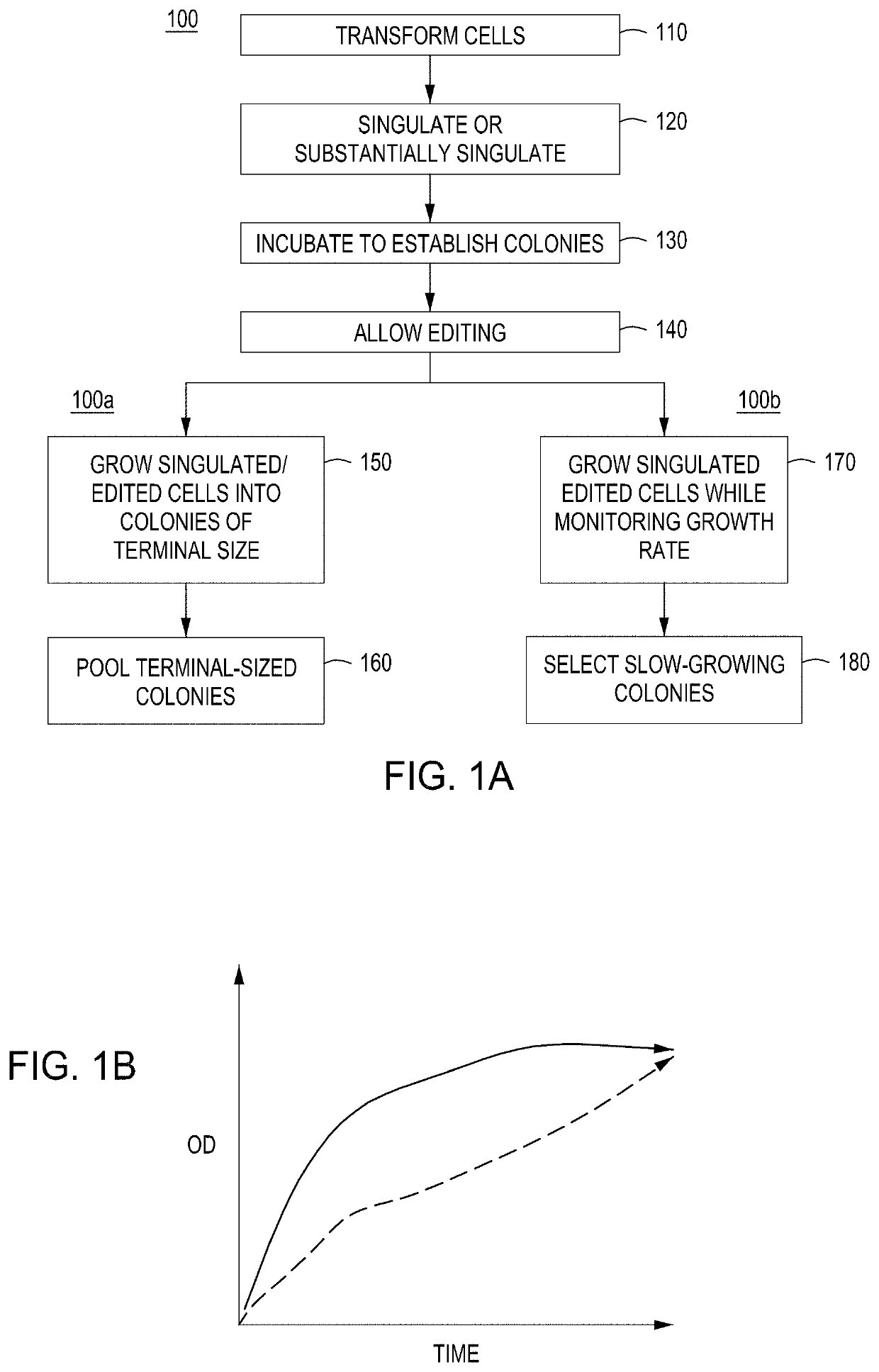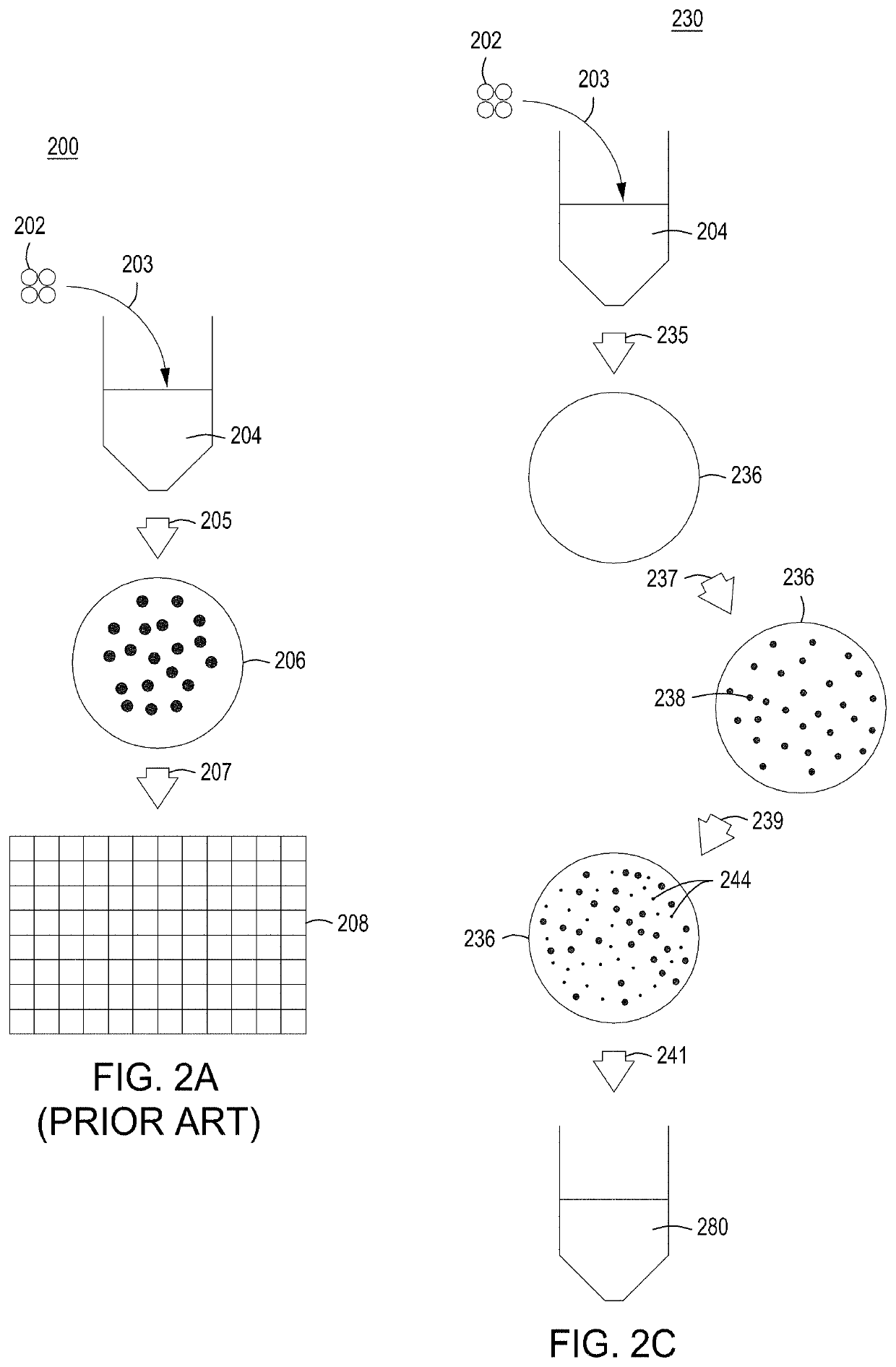Instruments, modules, and methods for improved detection of edited sequences in live cells
a technology of live cells and instruments, applied in the field of live cell editing detection instruments, modules, and methods, can solve the problems of selective enrichment of cells that have not been edited, rapid depletion of edited cell types, etc., and achieve the effect of facilitating the “cherry picking” of edited cell colonies, improving observed editing efficiency, and overcoming growth bias
- Summary
- Abstract
- Description
- Claims
- Application Information
AI Technical Summary
Benefits of technology
Problems solved by technology
Method used
Image
Examples
example 1
the Fitness of a Model System
[0311]Basic components of a model system were assessed. The model system comprised E. coli cells transformed with an engine vector, where the engine vector comprised a coding sequence for a MAD nuclease (i.e., MAD 4 or MAD 7 nuclease) under the control of the pL temperature inducible promoter, a chloramphenicol resistance marker, and the λ Red recombineering system under the control of the pBAD promoter (induced by addition of arabinose to the growth medium). The E. coli cells were also transformed with an editing vector comprising an editing oligonucleotide, which in this model system was a library of editing oligonucleotides each configured to inactivate galK, where successful editing results in white (versus red) colonies when plated on MacConkey agar supplemented with galactose as the sole carbon source. In addition, the editing vector comprised a gRNA coding sequence under the control of the pL temperature inducible promoter, a carbenicillin resista...
example 2
Nucleic Acids, Transformation
[0318]Editing Cassette Preparation:
[0319]5 nM oligonucleotides synthesized on a chip were amplified using Q5 polymerase in 50 μL volumes. The PCR conditions were 95° C. for 1 minute; 8 rounds of 95° C. for 30 seconds / 60° C. for 30 seconds / 72° C. for 2.5 minutes; with a final hold at 72° C. for 5 minutes. Following amplification, the PCR products were subjected to SPRI cleanup, where 30 μL SPRI mix was added to the 50 μL PCR reactions and incubated for 2 minutes. The tubes were subjected to a magnetic field for 2 minutes, the liquid was removed, and the beads were washed 2× with 80% ethanol, allowing 1 minute between washes. After the final wash, the beads were allowed to dry for 2 minutes, 50 μL 0.5×TE pH 8.0 was added to the tubes, and the beads were vortexed to mix. The slurry was incubated at room temperature for 2 minutes, then subjected to the magnetic field for 2 minutes. The eluate was removed and the DNA quantified.
[0320]Following quantification,...
example 3
ughput Clonal Editing
[0329]The following protocols address cell growth / survival bias due to dsDNA breaks:
[0330]Transformation:
[0331]100 ng of the editing vector cloned library or editing vector isothermal nucleic acid assembly reaction was transformed by electroporation into 100 μL competent EC1 cells containing the engine vector. The electroporator was set to 2400 V in 2 mm cuvette. Following transformation, the cells were allowed to recover for 3 hours in SOB medium. A 10-fold dilution series of recovered cells (in H2O) was spot plated and the resulting CFU counts / dilution ratios were used to calculate transformation efficiency.
[0332]Plating and Colony Arraying:
[0333]100 μL of the appropriate dilution was plated on LB medium+25 μg / mL chlor and grown at 30° C. overnight. Colonies were picked and grown overnight to saturation at 30° C. in 96-well microtiter plates.
[0334]Induced Cutting, Editing, and Edit Validation:
[0335]A replicator was used to transfer colonies in wells from the o...
PUM
| Property | Measurement | Unit |
|---|---|---|
| Length | aaaaa | aaaaa |
| Length | aaaaa | aaaaa |
| Length | aaaaa | aaaaa |
Abstract
Description
Claims
Application Information
 Login to View More
Login to View More - R&D
- Intellectual Property
- Life Sciences
- Materials
- Tech Scout
- Unparalleled Data Quality
- Higher Quality Content
- 60% Fewer Hallucinations
Browse by: Latest US Patents, China's latest patents, Technical Efficacy Thesaurus, Application Domain, Technology Topic, Popular Technical Reports.
© 2025 PatSnap. All rights reserved.Legal|Privacy policy|Modern Slavery Act Transparency Statement|Sitemap|About US| Contact US: help@patsnap.com



